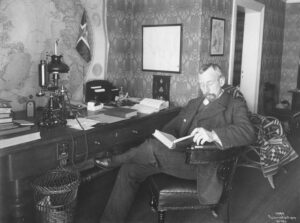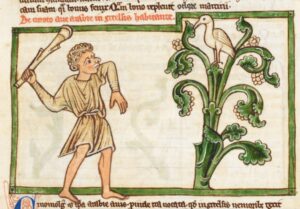A driven daredevil, Jean Francois Pilatre de Rozier traded a respectable career as a teacher to become the world’s first balloonist — and the world’s first aviation fatality.
Background
He was one of four children, born to an innkeeper and his wife. According to chemist and researcher Clement Duval, de Rozier was “careless, inattentive, fond of pastimes and rebellious toward study.”
However, his father was firm about giving his son a stable future and tried to fit this square-peg son into a round hole. At first, they shipped him off to a military hospital to be a doctor. But he hated surgery. His family then sent him off to study pharmacy, physics, chemistry, and natural history for three years.
While de Rozier eventually secured a position as chemist in an apothecary, he managed to network with the right people and opened a museum in Paris in 1781. He ran the museum on his own terms, preferring to make it interactive.

Poster promoting balloon displays. Image: Unknown (1785)
Making things go boom
While the Frenchman had an interest in the sciences, particularly chemistry and physics, he preferred practical application to boring theory. De Rozier published his scientific research but he never gained any recognition from it. He preferred to experiment, even dangerously. He liked to make things go BOOM!
And that, he did. Some experiments included making hydrogen-based explosions and turning glass into powder. His interest in the reactions of gases led to one of his greatest contributions: a respirator. Yes, all those N95 masks we had to use during the 2020 pandemic came from an early model invented by de Rozier. He wished to create a device that allowed the purification of the air when he was working with harmful fumes.
His study of gases also led to his fascination with the balloon movement, then in its infancy. He believed that “this inexpensive contrivance would be very useful to an army for detecting position of the enemy manoeuvers.” This statement definitely shows him to be not just a dreamer, but a forward thinker.
Balloonamania
Balloons and early attempts at aviation became popular in France in the late 1700s. The National Air and Space Museum refers to this period as “balloonamania.” It was a revolutionary mode of travel, inspiring everything from engineering to pop culture and fashion. The nobility and the royal family also had a vested interest in this new technology. Benjamin Franklin supposedly witnessed balloon flights in Paris.
Leading the balloon craze were two innovative bothers, the Montgolfiers. Joseph-Michel and Jacques Etienne started their ballooning career in June 1783. They began small, doing tests here and there, without passengers. In the fall of 1783, they used animals like goats or sheep to test whether or not humans could withstand higher altitudes. All was seemingly well.
De Rozier, who always longed for the spotlight, offered to do the first human balloon flight. He had observed the brothers’ work for some time. The king, Louis XVI, initially suggested that convicts should do the first human flight, to eliminate any unnecessary risk to regular civilians. De Rozier passionately disagreed. With approval from the king, he and nobleman Francois Laurent successfully flew untethered at a height of 100m on Nov. 21, 1783.

Portrait of de Rozier. Photo: Library of Congress
A lucky escape
The success made de Rozier want to try another flight, this time with some rich passengers on board. However, this next flight, in January 1784, had a mishap. The balloon, made of sheepskin and paper, tore. It crashed, and de Rozier was lucky to escape death. This foreshadowed the fate he suffered just a couple of years later.
De Rozier wanted to try again, and indeed, his third flight turned out much better. No tears, no crashes. He soared up over 2,700m for almost an hour. With each successful ascent, his reputation and fame grew, inspiring other dreamers and innovators to make their own attempts.
The balloon race
The world’s first “space race” was actually a balloon race in which the French would compete against the English. When de Rozier heard of this, he acquired a large donation to build his dream hydrogen balloon. He wanted to fly it across the English Channel from France. He and another man named Pierre Romain made their flight in June 1785.
That day was unsuitable for flight because of high winds. However, the intrepid balloonist’s impatience got the better of him. After half an hour, the balloon caught fire, and the pair fell to their deaths near the town of Wimereux, just north of Boulogne-sur-mer. They died instantly, and thus became the first-ever aviation deaths. An obelisk stands at the site of the crash, commemorating this unfortunate but historic event.
Conclusion
Some called him foolhardy. Others vain and crazy. To aviators, he was an idealist and was “lost afar in the future.” His biographer called him a “victim of honor and zeal.”






